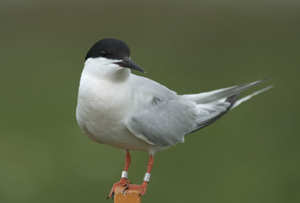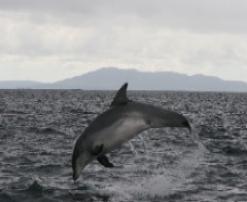Sandbanks in Irish waters comprises distinct banks (i.e. elongated, rounded or irregular ‘mound’ shapes) that may arise from horizontal or sloping plains of sediment that ranges from gravel to fine sand. They are primarily composed of sandy sediments permanently covered by water, at depths of less than 20 m below chart datum (though the banks may extend to water depths greater than 20 m). The diversity and types of community associated with this habitat are determined particularly by sediment type together with a variety of other physical, chemical and hydrographical factors. These include geographical location (influencing water temperature), the relative exposure of the coast, topographical structure of the habitat, and differences in the depth, turbidity and salinity of the surrounding water.
The greatest resource of sandbanks is found in the Irish Sea. These banks are from north to south: Bennet, Burford, Kish, Frazer, Bray, Codling, India, Arklow, Seven Fathom Bank, Glassgorman, Rusk, Blackwater/Moneyweights, Lucifer, Long and Holdens Banks. To date only 2 sandbanks, the Ballybunion and Turbot/Kilstiffin Banks, have been identified along the western seaboard at the mouth of the Lower River Shannon cSAC between Counties Kerry and Clare. No sandbanks are found on the southern coast of Ireland. A small bank also occurs on the north coast of Donegal called Hempton’s Turbot Bank.
Shallow sandy sediments are typically colonised by a burrowing fauna of worms (Glycera lapidum, Nephtys sp., Spiophanes bombyx, etc.), crustaceans (Pontocrates arenarius, Bathyporeia elegans, etc.), bivalve molluscs (Abra alba, Fabulina fibula, etc.) and echinoderms. Mobile epifauna at the surface of the sandbank may include mysid shrimps, gastropod molluscs, crabs and fish. Sand-eels (Ammodytes spp.), an important food for birds, also live in sandy sediments. Where coarse stable material, such as shells or stones is present on the sediment surface, hydroids, bryozoans and ascidians are present.
Shallow sandy sediments are often important nursery areas for fish and consequently can provide feeding grounds for seabirds (especially puffins (Fratercula arctica), guillemots (Uria aalge) and razorbills (Alca torda)) and sea-duck (e.g., common scoter (Melanitta nigra)). A survey undertaken upon the habitat of terns in the Irish Sea showed that the Kish Bank had significant numbers of auks (guillemots, razorbills etc.) and terns in the area. Roseate, Common and Arctic Terns were recorded roosting on the Kish Lighthouse and peaked in numbers during late August and early September. The presence of these bird species is indicative of feeding resources in the area. There is also a substantial population of wintering common scoter in the waters off the Wexford Coast adjacent to the Blackwater Bank.
The Irish Sea supports a relatively large population of both Grey and Common Seals. The main haul-out sites are the Saltees and several near-shore islands in Dublin Bay. There are no records of seals hauling out on Irish offshore sandbanks because most are completely immersed at all times. However, it is likely that the areas over and adjacent to sandbanks form an important feeding resource.
Cetaceans are relatively abundant in Irish waters and it is likely that there are greater feeding resources over sandbanks due to the hydrodynamic effects than surrounding waters. The area where greatest cetacean recording effort has been concentrated, on sandbanks within Irish waters, has shown a significant and consistent concentration of bottlenose dolphins. The resident bottlenose dolphin (Tursiops truncatus) population found within the Lower River Shannon cSAC is closely associated the Ballybunion and Turbot/Kilstiffin Banks. However, this concentration of cetaceans around sandbanks may not be typical since a study at the Arklow Bank showed no relative increase in Harbour Porpoise compared to surrounding waters.
 |
 |
| Roseate Tern | Bottlenose Dolphin (Photo: NPWS) |
Click on the following links for more information:
- Irish Wildlife Manual No 29:
 Roche, C., Lyons, D.O. & O'Connor, B. (2007) Benthic surveys of sandbanks in the Irish Sea. [738KB]
Roche, C., Lyons, D.O. & O'Connor, B. (2007) Benthic surveys of sandbanks in the Irish Sea. [738KB] - Sandbank Survey 2007
 Aqua-fact International Services Ltd. (2007) Marine Surveys of Two Irish Sandbank cSACs. [2,804KB]
Aqua-fact International Services Ltd. (2007) Marine Surveys of Two Irish Sandbank cSACs. [2,804KB]
